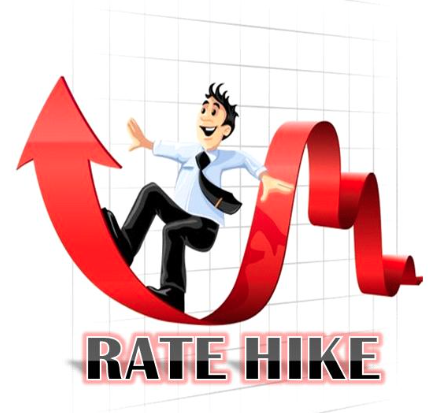
Deeper Dive into the Federal Reserve and Rate Hikes
Watching my kids ride a bike for the first time now ranks among my proudest moments as a dad. There was something so heartwarming about seeing Gavin and Kiera take off on their own, seeing a pure expression of joy as they propelled the bike forward faster and faster, with more confidence in each pedal stroke.
Not unlike riding a bike, the Federal Reserve is experiencing those nerve-racking feelings of letting the bike go for the first time since before the 2008 recession. Only instead of a bike, The Fed is letting the US economy move forward under its own power, without help. Will it fall? What will we do if the economy starts to wobble? Should The Fed run alongside or just watch as it struggles for balance? The economy looks balanced, we think it’s good …oh wait, maybe The Fed needs to hold for a few more seconds.
To quote my son, “Dad, you’re causing me to tilt and crash, just let go of the stinkin’ bike!” So I did, and much to my amazement, he took off like a cyclist at the Tour de France, with no issues whatsoever, at least until he realized he did not know how to turn – a different analogy for a different day.
The Federal Reserve is now at the point where it must let go of the economy or risk being the force that causes the wreck to happen. Much of 2016, and certainly Fed conversations this quarter, have centered around this very point. Inflation indicators are starting to rise for the first time, which is welcome news after years of stagflation. Core CPI (consumer prices) is up 2.3% over the past year – the CPI measures inflation without more volatile food and energy. As oil continues rebounding, overall inflation will take hold, and prices will rise. This means we’ve likely seen the last days of sub 2% inflation for the near future.
If we don’t see The Fed raise rates appropriately, we may risk too much money in the system. The Fed has kept rates low to safeguard against another wipeout like 2008. Just like holding on to the bike for my son, this works as a safeguard for a while, but eventually I become as much a part of the problem as I am the solution. I’m needed to pick him up when he falls and help him get going, but at some point I must let go and see how he does.
Of course, I never let go without positive signs. I can feel he is balanced, he is pedaling and he has enough momentum he should be fine, for at least a few seconds without me.
While perhaps slower than desired, we’re seeing wage growth of 2.6% in this past year, versus 2.0% just 2 years ago. Wage growth is accelerating. The backbone of our economy, the banks have a record amount of loans and hold a record amount of excess reserves to back those loans, around $2.2 trillion. Raising rates now will help the banks’ business model by allowing them to make more money from interest rate spreads. It may also give them confidence each day that more profit is made to lend more out and help our economy grow at an accelerated pace.
We believe the positive signs thus far are a result of The Fed starting to let go of the bike (the first interest rate hike last year). It has wobbled, and will continue to wobble, as it gains footing, but it’s time to see what happens if The Fed raises rates again.
If we don’t see The Fed continue to raise rates, we may risk inflation without appropriate economic growth. Put another way, our everyday purchases will become more expensive and our wages will not keep up. Like my son said, “Let go of the stinkin’ bike!” and let’s see what happens.
No one learns to really ride a bike until we have a chance to try on our own. Scary? Yes! Will the market throw a temporary fit? Maybe, but is it necessary for long term economic health, regardless of the result? Absolutely!
We’re eager to see what happens next, and we’ll keep you informed as it happens. Until then, let’s try to enjoy the ride as best we can.
Important Disclosures
Evergreen Wealth Management, LLC is a registered investment adviser. Information presented is for educational purposes only and does not intend to make an offer or solicitation for the sale or purchase of any specific securities, investments, or investment strategies. Investments involve risk and unless otherwise stated, are not guaranteed. Be sure to first consult with a qualified financial adviser and/or tax professional before implementing any strategy discussed herein. Past performance is not indicative of future performance.
Index results do not reflect management fees and expenses and you cannot typically invest in an index.
